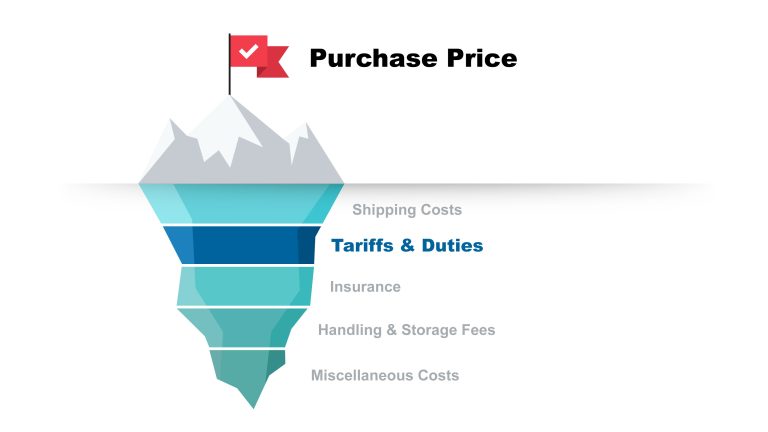Understanding Tariffs, Duties, and Trade Mechanisms in the Electronics Supply Chain
Electronics companies operate in a world defined by speed, high volumes, and unforgiving margins. Every shift in global trade policy shows up as a direct cost in a Bill of Materials, often with little warning. Tariffs, duties, and other import-related charges aren’t abstract policy debates for this sector. They’re real expenses that shape pricing, profitability, and the reliability of cross-border supply chains.
This article explains how tariffs and duties work in the United States, how they affect electronics manufacturers, and where tools like free trade zones and duty drawback fit into the picture. The goal is to give procurement, supply chain, and trade compliance teams a clear view of how these mechanisms interact and why the distinctions between them matter.
The Electronics Industry’s Exposure to Trade Costs
The supply chain for components like magnetics, power supplies, connectors, and semiconductors stretches across multiple borders. These products often come from countries where specialized manufacturing is concentrated, making imports unavoidable.
Because most of these items are classified under tariff systems that use percentage-based fees, even a small rise in cost from inflation or scarcity increases the corresponding tariff or duty. Importers pay these charges at the point of entry, and the expense quickly flows into the final price offered to OEM customers.
The result is constant pressure:
Quotes may change from one week to the next.
Margins become harder to control.
Competitiveness hinges on how well a company anticipates these extra costs.
This is why understanding the tax and regulatory framework behind imports has become a core business skill rather than an administrative afterthought.

What Duties and Tariffs Mean Under U.S. Law
Although the terms are often treated as interchangeable, they serve different roles in U.S. trade policy.
Duties
A duty is a tax on imported goods. It may be based on value (ad valorem), quantity, or weight. These rates are established in the Harmonized Tariff Schedule of the United States and administered by U.S. Customs and Border Protection.
Duties serve two main purposes:
They generate revenue for the federal government.
They help regulate products considered harmful, sensitive, or counterfeit.
Most electronics components fall into HTS categories subject to routine ad valorem duties.
Tariffs
A tariff is a broader policy tool. It’s still a tax on imported goods, but its intent is usually tied to economic or political objectives. Tariffs can be created under the Tariff Act of 1930, various trade laws, or presidential actions.
Common goals include:
Protecting domestic industries from low-cost foreign competition.
Creating leverage in trade negotiations.
Responding to unfair trade practices or national security issues.
Recent examples include increased tariffs on steel, aluminum, and a range of electronics from certain countries.
Key Differences
In practice:
Duties are the routine, structured taxes collected on imports.
Tariffs are strategic charges used for protection or policy.
Every tariff is collected in the form of a duty at the border, but not every duty reflects a policy action. This distinction becomes important when companies try to recover costs or use special trade programs.
For a quick reference, see the table here:
Feature | Duties | Tariffs |
Definition | A tax on imported goods, generally fixed or ad valorem | A broader levy on imports or exports, often protective in nature |
Purpose | Revenue generation, regulation | Domestic industry protection, trade policy, negotiation leverage |
Legal Basis | Harmonized Tariff Schedule of the U.S. (HTSUS) | Tariff Act of 1930, trade agreements, presidential trade actions |
Scope | Applies to specific goods or categories | Can target entire sectors, countries, or specific goods |
Implementation | Collected by U.S. Customs at point of entry | Can be temporary, retaliatory, or strategic; implemented by trade policy |
Classification, Country of Origin, and the Role of HTS Codes
Every item entering the United States must be classified under an HTS code. This process can be highly detailed. For example, a specific type of inductor is classified differently than a fully assembled power supply.
The Country of Origin adds another layer. It is determined by where the product underwent “substantial transformation,” meaning the point where it gained its essential character.
Because so many electronics assemblies rely on parts from multiple countries, the final assembly site often becomes the official origin. That designation controls which duties or tariffs apply. Accurate classification and origin determination are essential for cost planning and compliance.
Free Trade Zones and Their Strategic Uses
Free trade zones (FTZs) allow companies to bring goods into specific U.S. locations without immediately paying duties or tariffs. Charges are applied only if the items enter domestic commerce. If the goods are re-exported, no duty or tariff is owed.
In theory, this can be a powerful cost-management tool. In practice, FTZs come with strict rules, heavy documentation requirements, and serious penalties for errors. Maintaining compliance usually requires dedicated staff, which puts FTZ participation out of reach for many small and medium-sized companies.
Duty Drawback: Recovering Certain Import Costs
Duty drawback allows importers to recover duties paid on products that are later exported or destroyed. This can reduce total landed costs for companies that serve global customers from U.S. facilities.
However, tariffs imposed for policy reasons (such as Section 301 tariffs) are not eligible for drawback. This is a common point of confusion. Businesses often assume that because duties can be refunded, tariffs can too. The reality is that policy-driven tariffs stay in place, even if the product is eventually shipped out of the country.
For companies in the electronics sector that rely on global production and distribution flows, this difference can significantly affect cost modeling.
Business Implications
Understanding the distinctions among duties, tariffs, FTZ programs, and duty drawback is more than an academic exercise. These mechanisms directly influence:
landed cost calculations
sourcing and supplier selection
pricing strategies
compliance exposure
the viability of alternate manufacturing or distribution footprints
Companies with the ability to classify products accurately, assess country-of-origin rules, and use available trade programs build a structural advantage. They gain more predictable margins, more stable quotes, and better agility when policies shift.
Conclusion
Tariffs and duties have always been part of global trade, and they’re likely to remain a constant feature of the electronics supply chain. Their impact is immediate and often unavoidable, but companies that understand how they work can manage these costs more effectively.
The strongest organizations treat trade compliance as a strategic capability. They use accurate classification, thoughtful sourcing choices, and when appropriate, mechanisms like free trade zones or duty drawback. In an environment where component availability and global trade rules change quickly, this approach helps keep products competitively priced and production schedules stable.
To learn more about landed costs and how they play a role in the cost landscape, visit our other article here.

